A good man must be plentiful. This saying is certainly comforting, but obese people everywhere face problems arising from their build. Take a bicycle: you want to ride it, but it’s scary to leave a battered frame and bent rims underneath you. And I feel sorry for my body, because to fall from a broken bike – not the most pleasant adventure. What to do good people, of which there are many? It’s simple – look for a suitable bike for heavy people. Fortunately, there are models specifically designed for them.
How much weight can a normal bicycle support?
Unfortunately, most bicycles on sale are not designed for people with a large build. Declared by the manufacturers 100 kg – this is rather embellished reality. As life shows, even a cyclist whose weight is about 90 kg, soon “ushatyvayut” bike.
If you move the bike more or less actively, will fly all: and bearings, and hub, and the axle and spokes. Rims can crack or bend, even steel saddle frames can’t withstand the weight of a big rider. Therefore, sports heavyweight has sense to look for a bike, the cost of which starts its dispersion from $ 600. In principle, looking for a specially designed for an obese person bike makes no sense. It is enough to choose a good mid-level bike. If you do not kill it purposefully, then his life will work out even under the heavy rider.
In the medium-price range bikes, as a rule, have a fairly reliable hub and mounts, wheels and carriages, reinforced rims and directly to the frame of the bike, for the manufacture of which use higher quality and stronger alloys. Such models are designed for at least 120 kg of weight. Problems can begin when, in addition to fat bicyclist on a bicycle loaded with a wheelbarrow with potatoes, and on top – another 7-10 pounds of cottage crops. Here it already makes sense to think about the assembly of a more robust rear wheel.
Standard models can easily withstand 100-110 kg for 3-5 years or more, when:
- the bike is used carefully and not intensively;
- the owner carefully monitors the condition of all units, properly serviced and chooses quality spare parts for the bike;
- The bike was not purchased at the market for 10 thousand rubles, and in a normal store for at least 15-20 thousand.
No matter how you slice it, but the excess weight is detrimental to the condition of the bearings, tires and bushings. One of the most common problems is rim cracking.
Warning: this is dangerous. A serious problem is the “fatigue” of the seat tube metal. The worst thing is that the wear may not be noticeable at all, but a ride can end in serious injury and maiming if at one point it simply bursts.
Based on this, we can conclude: bicycles for people with a lot of weight should cost at least 20 thousand rubles. In this case, the model will be more durable and reliable. Bicycles of this price category can withstand 120 kg of weight under moderate loads.
But what about those whose weight exceeds 150 kg? Let’s move on, focusing on the relationship between weight and price tag – you need to look for a unit that starts at about $650.
What kind of bike does a heavy person need
Of course, you will not be guided by the price tag alone. You need some more parameters to determine what kind of bike is suitable for a heavy adult weight. And here are some of them:
- Disc brakes (ideally – hydraulic). You need to understand that you need a lot of force to stop a load that weighs more than a centner. This means that rim brakes are unlikely to do the job.
- The condition of the wheels. Pay attention to this parameter every 100 km. Do not neglect the services of a mechanic – give the bike for tightening the spokes regularly. At least once every 2 weeks check the wheels for the presence of “eighths” (you can do this yourself by lifting the wheel and turning it).
- Condition of the joint picks. A lot of weight creates additional load, and as a result, the fasteners begin to come loose.
Choosing a bike for an obese person, give preference to models for cross country or standard mountain bikes. As a rule, the design of these models involve an even distribution of load between the seat and the handlebar, which is not the case for urban or tourist versions.
Interesting! More expensive does not mean better. This principle should be guided by when choosing a bike. The fact is that some models, the cost of which is beyond comprehension, are made of high-tech lightweight alloys (carbon or thin-walled aluminum, for example). This is not the best option for overweight people.
Tuning bikes for people with a lot of weight
So, you have studied the market, compared models and bought a bike that suits you in all respects. After the purchase, you should subject the bike to a small “upgrade”, which will increase the level of comfort and safety.
Let’s start with the seat. To minimize pressure on the crotch, remove the typical narrow saddle and put a wider one with gel cushions. This manipulation will make you more comfortable to ride long distances. Some people recommend a thick leather saddle with springs. Finding them on the market is not so easy. It used to be that such seats were put on all Soviet bicycles and they cost pennies. Today it is an elite imported part, designed for the discerning and demanding buyer.
If your weight is approaching the 150 kg mark, buy a spare seat tube and carry it with you always (just in case). After each trip (especially on rough terrain) carefully inspect this unit for cracks and bends. “Fatigue” of metal is an extremely dangerous condition that can lead to tragedy.
Tuning a bike for an obese person can include other nuances:
- Tightening the spokes. Spin the wheel loose and touch the spokes lightly. Ideally, they should make a melodic chime. If the sounds differ from each other and the “chorus” doesn’t sound very harmonious, you should take your bike to a bike shop for a spoke tuck.
- Horns. This accessory is designed so that the cyclist with the least effort, standing on the pedals, could enter the mountain. As for the larger rider, the horns can provide an invaluable service: they allow you to change the grip and redistribute the load, which helps to relax the hands and relieve some of the muscle corset.
- Horns. It is unlikely that an obese person will jump on curbs or jump with a swing on concrete. Therefore it makes sense to put wider tires, which will help to evenly distribute the pressure.
- A front fork. If there is a possibility, it’s better to change it for pneumatic and pump it up to your liking. Experienced cyclists say that the spring-hydraulic fork in 5 years of dynamic riding with jumps remained intact and unscathed.
Pay attention to the pedals as well. This element is also subject to considerable stress during driving. If on your purchased bike were cheap plastic parts, it makes sense to change them for their steel counterparts.
And if more than 150 kg?
If your weight is inexorably growing and has already crossed the mark of 150 kg, but the desire to ride a bike does not disappear – should choose the three-wheeled model. Worry about this is not necessary, because a lot of weight – this is a temporary circumstance. Therefore, the first thing to do is to balance your diet and increase physical activity, if fullness is not provoked by disease.
A three-wheeled bike for people with a lot of weight is a reliable and safe design. Unfortunately, getting on a two-wheeled bike for people whose weight exceeds 150 kg – is not safe. With so much excess body weight any fall from the bike can lead to serious consequences. Do not forget also that in most cases an obese person has problems with metabolism, which means that the risk of developing osteoporosis increases many times.
It should be noted that a trike (three-wheeled bike) has significant advantages over two-wheeled models:
- No need to keep your balance. In fact, this is very difficult for a large rider. Excessive body weight leads to disorders of the vestibular system, dizziness and joint pain.
- It is possible to ride at low speed, up to a complete stop. This allows you to dose the load and take care of the health of the cardiovascular system.
- The likelihood of falling is extremely low.
In addition, obese cyclists benefit much more from a leisurely ride than from intensive walking. A three-wheeled bicycle allows you to distribute the load evenly, which contributes to weight loss.
How to choose a bicycle for heavy people
We have already decided on the main parameters, according to which we will choose a bike for large cyclists. Let’s summarize:
- classic mountain hardtail;
- medium and above average price segment.
And now let us outline the main parameters that will help make the right choice:
- Brakes. Choose models equipped exclusively with disc brakes. V-brakes and cantilevers – less reliable option, because their power will not be enough to stop such a large load. Hydraulically actuated disc brakes are the best option. They cause sensitive modulation, which has a positive effect on the clarity and softness of braking.
- Rims. The more complex their profile, the stiffer and stronger they are, withstand high loads and are less prone to deformation. It makes sense for a full person to choose a bike, complete with reinforced rims.
- Transmission. The number of speeds – not something to chase. But what you should pay attention to is the quality elements of the transmission, which include rear and front derailleur, stars, cassette, etc. It’s almost impossible to tell quality and reliability by eye. So it makes sense to press the consultant or to give preference to well-known and well-established manufacturers such as Shimano or SRAM, for example.
When choosing a bike, pay attention to the weight of the bike. Consultants will assure you that lighter models are ideal for heavyweights. They will foam at the mouth to prove that your heart needs the optimal load, and on a lightweight frame is much harder to ride, which contributes to weight loss. It’s all just a marketing ploy. You can understand the salespeople – they’re also people who need premiums, because lightweight bikes are lightweight because their frames are made of carbon fiber. They cost an order of magnitude more than their aluminum counterparts. But this nice point for the average person can be a cruel joke for the obese cyclist, who risks falling off a broken bike.
Conclusion! At 130 kg or more, the weight of the bike loses its meaning. Choose a really reliable and high-quality bikes that will not bend under you in the next 100 km.
Popular Models
Brake features, drivetrain, rim quality and saddle shape all matter when choosing a bike, of course. But what about very real models suitable for full riders? We suggest looking at a list of bikes that can easily handle heavy loads with moderate riding intensity:
- Merida Big Nine 400. Advantages: reasonable price to quality ratio; pneumatic fork, adjustable to any body weight. This model is distinguished by a minor weakness: the wheels (if exploited moderately, the bike can be replaced by lighter). Some owners note that the fork consumes its life literally in 1-2 seasons.
- Cube Attention SL 29. This bike is slightly more expensive than the previous model, but at the same time has more solid technical characteristics. Pneumatic fork is almost ideal among analogues. The model features a good package, so it makes sense to upgrade only guided by personal preferences and body weight.
- Merida Big Nine 100. A decent model with good technical characteristics. The basic package has good hydraulic brakes, cassette with 27 speeds and quality wide tires. In fact, in this bike there is nothing that needs to be changed. If you want, of course, you can make an upgrade fork, but it’s more of a surplus (also, expensive).
When choosing the right vehicle, focus on the length between the center of the carriage assembly and the seat tube cut point. Do not take a double-suspension and do not be tempted by the shock absorption of the rear wheel. Aim for maximum strength and simplicity in bike design and a lack of unnecessary elements.
Driving Advice
Even if you – the owner of the bike, suitable for you on all parameters, it is not superfluous to follow simple precautions that will save you from injury, as well as extend the life of the bike:
- Ride carefully. Trying to jump off a curb or skid onto a kerb is a bad idea if you weigh more than 100 pounds.
- Learn to stand on the pedals (provided that you have replaced the plastic parts with their steel counterparts). This will extend the life of the saddle and seat tube.
- Do not “twist” uphill while standing on the pedals: spare the bearings and connecting rods.
Try to distribute the load evenly and not to overdo it by pedaling. It’s not so much a matter of looking after your bike as of allocating your resources wisely. Try to choose a riding tactic that allows you to evenly and consistently lose the extra weight.
Conclusion
Many obese people seek to lose weight by biking. This is a really effective way if you choose the right bike, modify it slightly according to your individual physiology, and choose a competent riding technique. When choosing a bike for a full person, focus on the cost of the unit and its durability. Do not fall for marketing tricks and advertising consultants. Your bike should be as simple and reliable as possible.

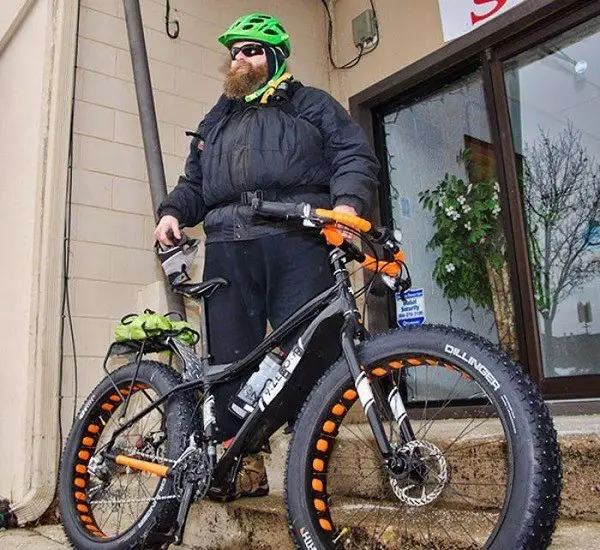
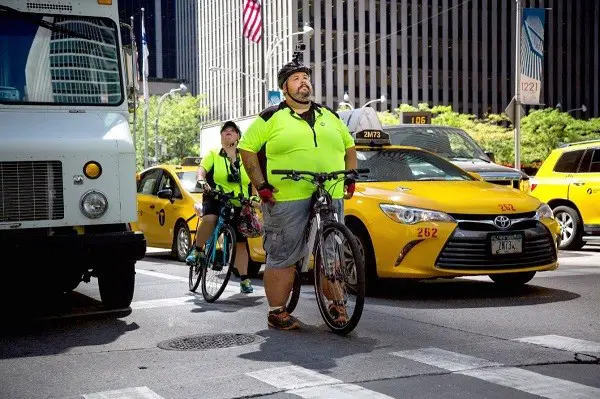
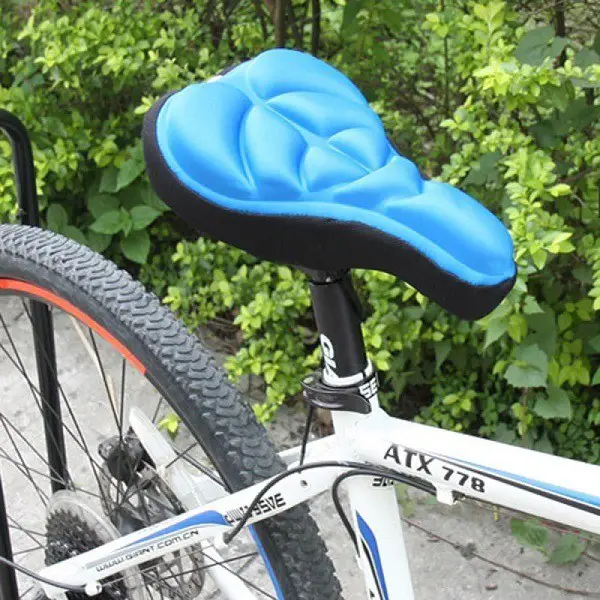
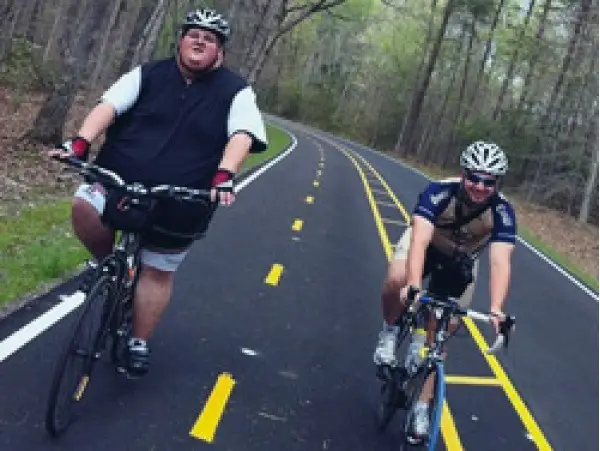
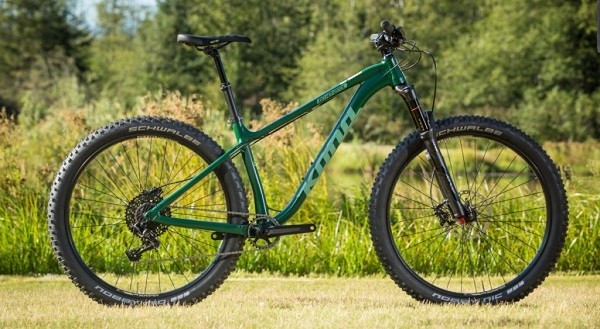
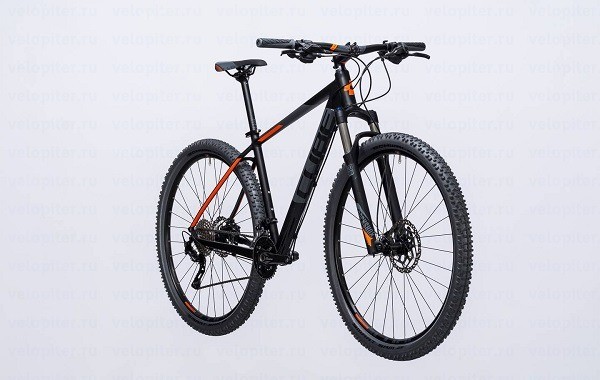
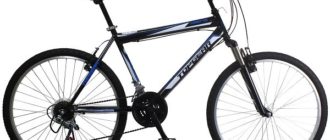





Don’t sing a song. Comparing Merida and Sovdeep bikes)))) I mean forward. NOT REALLY. I had a Merida, it’s a killer bike. Didn’t even have to adjust anything. When I bought it, in 3 years of use (later it was just stolen from me) nothing broke, not even a tire was broken and nothing was adjusted, I mean gears or brakes. And you compare it to a Russian bike, which by definition means BEDA. Russia is always a BEDA, no matter what you take, from cars to politicians – all bad people.